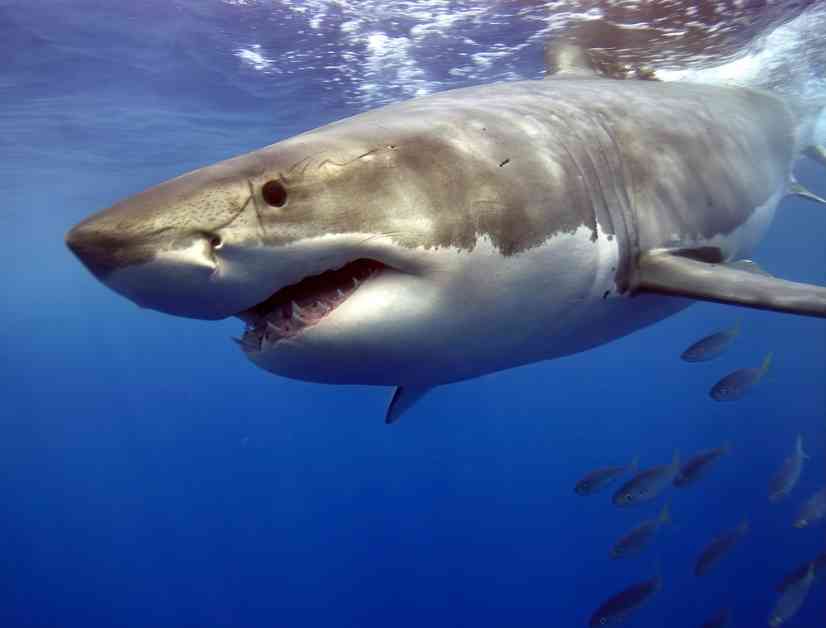Blue whales, the largest creatures on Earth, can grow over 100 feet in size, with even their young measuring above 20 feet on average. On the other hand, great white sharks are known for being quick, powerful, and efficient predators. The question arises: do great white sharks pose a threat to these massive blue whales? According to marine ecologist Chandra Salgado Kent from Edith Cowan University, in most cases, the answer is likely no.
Fit adult blue whales are too large and powerful to be seriously threatened by sharks, even great whites. They have the speed and stamina to outmaneuver a shark, which relies on short bursts of speed for hunting. While scientists have observed whales with bite marks, indicating encounters with sharks, there have been no reported instances of great white sharks attacking and killing blue whales. This suggests that such attacks are highly unlikely.
However, sharks do scavenge on dead whale carcasses, including blue whales. The real question is whether the attack occurred before or after the whale died. While sharks may target other species, such as humpback whales in certain circumstances, the evidence points to scavenging as a more common behavior.
On the other hand, killer whales, or orcas, have been known to attack and kill blue whales. In some cases, orcas have been observed purposefully hunting and killing blue whales, showcasing their predatory skills. Climate change and its impact on ocean dynamics could potentially alter the relationship between sharks, whales, and orcas in the future. Shifts in prey availability and ocean conditions may affect the body condition and fitness of species like blue whales, making them more vulnerable to predation.
As the world grapples with climate change and its effects on marine ecosystems, the interactions between sharks, whales, and orcas may evolve. While sharks may not be the primary threat to blue whales currently, the changing environment could lead to unforeseen challenges for these magnificent creatures. It remains crucial for scientists to continue studying and monitoring these interactions to ensure the conservation of these iconic species.






